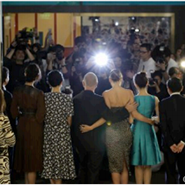Consumers are becoming surgical with their time in stores and online, making slip-ups by retailers reverberate further than they once did, according to a new report by L2.
Mobile is becoming the preferred channel for consumers scouting out purchases, but few of them actually convert on smartphones. Despite this tendency, retailers are making it difficult for consumers to leverage mobile the way they want, which can end up diverting sales elsewhere.
"Surprisingly few retailers are leveraging their most valuable asset, their bricks and mortar footprint, as a digital asset," said Reid Sherard, a research associate at L2, New York. "Only one third of brands let users check in-store availability of specific products, and only 14 percent had implemented buy online, pickup in-store features.
"As Amazon has trained consumers to expect products in two days and continues to expand same-day delivery, retailers have barely begun to catch up," he said. "Over half of brands quoted six days or more for delivery."
The "Digital IQ Index: Speciality Retail" study attempts to quantify the digital competence of 82 specialty retail brands in the United States market.
All-stars or no stars
Pure-play positions are no longer tenable, according to L2, and many of these retailers are crossing into the opposing channel to meet consumer demands.
Although in-store traffic is down, the bulk of sales still occur in stores, which forces digital pure-players to secure bricks-and-mortar locations.
Similarly, consumers do most of their research online, which forces physical-only brands to open up product options online.
"Pure play brands exist at two extremes of retailing, while the future lies somewhere in the middle," Mr. Sherard said.
"Online-only retailers are realizing that over 90 percent of retail sales occur in bricks-and-mortar stores, and that stores are just good business," he said.
"Meanwhile bricks-and-mortar retailers are seeing the importance of digital as a growth channel: online sales accounted for 44 percent of Williams-Sonoma's business last year."

Net-A-Porter email
Overall, speciality retailers improved overall performances from last year relative to the rising tide, as more of the brands examined in the report received higher digital IQs.
Enterprises continued to have a positive effect across their portfolios due to their ability to quickly enact best practices, a theme common to many L2 reports.
L2 Speciality Retail report
Fast tracking
Fifty-three percent of retailers cited mobile as their primary focus going into 2014, according to Forrester Research.
However, just 14 percent of retailers allow consumers to check in-store inventory on their mobile devices, hampering consumers' ability to conduct fast research on-the-go.
Accompanying this shift is the consumer move from showrooming to Webrooming.

Cartier received a "Challenged" score in the report
Not long ago retailers were afraid that showrooming would gut in-store profits, but now the implications of the trend seem to have reversed, according to a new report by L2 and RichRelevance.
Unlike “showrooming” where consumers let in-store prices duke it out with discounted online prices, “Webrooming” occurs when consumers research online before shopping in-store. However, many retailers are failing to provide consumers with the resources they need to make Webrooming a seamless affair, and are losing sales in the process (see story).
Final Take
Joe McCarthy, staff writer on Luxury Daily, New York
{"ct":"U4Q0zd5g4mKhGDFdqJsOt+QFLWQjlJYfie894tsAQgT2+7Q4h3IH+j19atmRIy6uOaim7ZyIz\/YZ1s1cbe8KIBa18jmOQev2nQN+LH3TPd9x+OOHkNkpW1ZVy+p0KpMqnuU8JyuTFQfLcjuS5fhThLRdmAcsCeGZ4KO3mJr4+g2zle3SCDZTI2o89GKUkonRsX8BqL5If\/MBdRVw+nMbvUcp0OSzP3Ybw\/hc+4QGk5O5nGZeR2IlU53ucwFf5Rcmdmg8zVydyKVx0XW6yZayQmmCmTtSaOMjXQajNgGnUFy9QlqVy\/sGGpFK9y\/rbVJhngKAOxxln7gQOTHBw+c4AADlG4wiRnm9owcXVU4L3JZoSRBTqPaDzlL8El7nVjy+Pxj96uuRqzYs7BzQPlyUzxGQlgGalkmwDsNx3R5oPqjR3+a5Yy3mCunaTGRWpOMATkbWhnDGQcI+tCRt9cvx7Y8MQ4nVkbePaXTqnHCRDznYqX7w+a+E3q0JBmSw\/k4ERyFvBkkgDzFv6oYZb5ReUN3bx3v\/+q+Tc3hs9rEuNXRu\/LbkUY6k+uM1QKDJjSacfFWqj7ICeM+9qjIcmjIXmM8WEr6ljsBeVxB0KItEy1qqgON7FzuNSh4K+Z31Hp+eP1P10kqjsEAJ+FD3IN2+0rhGA8zAB8mAhDxTKE\/j35FCNSJxDeGfJ3xDVXFxfuv8MPE8YAB6x2G9nGmfA+V8TcAjkwylk9NQq99ugULW+t1vE87C+A1Pgt4i0eG+YW6pocV5O8ftnVCNgT9M583LIj2fu9yI6KUWg0ICg9BwQJ9EiAb2fn95ZcDweMgyB10A2ssoVoqCGxhgW\/j4O8afYv6K6ot31ixmJUmBfSXi17wzPb8BGnDnIqUsYEYbYYY4YOhPBpo\/dsXFBZL+blezXpn21FYOfHW05kTvK\/jV8CptEfTdqJ2wwvWHQLUYcVT\/d5nwA\/JFJKTCvacpOyy4tLvjhgzGqEMBF++onWYIi6luYkidsrlgJuINK2J\/D3HxMzgZUluv9stCpgMG6r0tiaIVQctRxp4kloIa6tXerc2iigdbrq9P6AnOM0ZFS7vWPbyMQqBDcFI0Jo0\/Mb8M6KX2Oh4\/vWZQswHRq0n8pq6qMNEu1EVkjOsldeSBkSCBwOF4VRidj\/JAaVpIYS5ad+8ktMSIHar192\/EZuvC34bO9ji8jumleyq57IH9oqt7U7VxyHy3uGUIuYcD+Ja+nPC7Z\/wEv0U7Q3OzBEfsr1ZwXRhf9sxWkx7aqJom5yM98g+Y9274uAiMX4K0MJIinsCOjXahC55Y1p\/RKKxABjmrHKQJ\/0aEDM23bEzJBVMQA9cYCdJPmyvgMYkfB2DB7mnAkwlrBlh8pIICU5ul0NHpzQNJ690CNl2lBQdvEPA9gsPAB3IQ4m7iJvgiEZCdh6G\/HoaDxLbigBZWi+XObcw1Gc5UbBkDQFRXrwsAGUAxWMetVIlF+mZkFRSQ3xuYtlsDrIeHaQYpfzXYsXDX9D3wI4rrl+d+jhlk6Mshw3m5pn68qxmbb+rY9g8KQFI356admTtMfF94xlCsWcS63vyYJJxAK14gLDS7hYgXntjG3uDFSkrOoDajIcxIMIr44QxSI5Sha4CS2lczRvsusDDo6ON1zygUAYAAGXM1E5nmDQSBvGMSNgSuXpEYMxga0\/zz5TN2TpZMUd94vMSnLFQ87uT9Nw3yybAauwANeA3x5D5\/OAZlgVke0DFvD+n8MDxRS+CFULEZvUljz\/++dS8OjTJrHioW3Bv8N1Ojgv29Ca4RwDe1npES1X+1h67174keT5KTlPEaNYXqbP8XwLmPD3YBY1JSIgljIe+Hn7ZDatBKHC0Luj1fEbOj3M+ZQwnl6niIBUSzBZQYq8z4vB2KfUSiMGWX2SZJGFrvvdvrjWl92neQpwB5UEoIlj5RKVJBoFXr0k3RK8emeRUgVZSPVzVYAkQ252nSNXmVyf+X3Vllt\/OoDtK3r1\/YkR0XZWifW0O4HKxA4ZJa9wM9Trxixr9SSMXUACOM96s6\/VrX1oOJX8LmyRWuche9C3O7EA\/\/yxg96PN7U4EWnJqpKjsHkvtWUO3bR0\/gkHZYCFnkCRkkmArMBeDTU5g\/82AQh\/iqFBQPGr0wvhj\/5zLBfhWnDcWaTbZElfdCiZNFZB2GfmDqG3emKZzgM1sai9GYCht\/qYK6uHOfgBim+YdI\/NL+mFzphWZo4BolI7JAgnsxd1u0Ak8cccyPVJHyz5yK8Ufb6ZbE98pt22Lb7NClP7blyeFWhekM0Kff3Y9fbbBTiGTe4Lmsi\/6PXAhpa6d90436za7WwwDj0S4XJs94giIynIef9tsI\/cYWW6t3u7SRMyaJ2B8lWny9Qb8I5WPgccYdilJnrPMCXhJ6YXMp7ohGmyNPsCK\/lw9\/9FOvxGSy\/DUBjszo6PTpv6iSw0lvAhhtvJR2npFGcVgKtVEiUleCp3NuxSk6CGWsb26z1SswWSNJpdjbFXcaN22bCbIo02BC\/\/Qgt76ZDV4XlSh3gUViBKv+xPMNBGkzEeUDFZvvLGMYbzWBH4zWIail2iKu8uksTQi3P4sz8M1tBv6AGSjcRF+amDA5iQu9ND1ChMH+nfAOG4b5oA8AVT3j\/gp+V9PbhmobohYf7gRKhbcSyzTBJLnyRyKrQEpzX2bSjqUdsr3r9dAULotzD14xmO86Y91JxtJTjTf2QXOxWN52evp9un\/qMKfhs4R7EnZ6zev6goBdnFBxdQBM0WDiL4jRbi8knctQ+mxauVggcKgIJ3hcTZZB70O4VvoMKpmSTYdR4a+85dWUeDKoHkGNuibW7XKMBWm\/uk7uhZkenZdRmG+yTg8NIpJlosb4xLyyq5flE0of\/TvA03aLKJOuGZs2qv1JV\/iUgs8GZChGBycT0ru78lHubzKoEKUeX\/jJTSwhHUQOMvYuX5XBQq3u3j4hGlH\/lvR1nbF+qRZds6qVee4gooHS+8p3ElR11dNpPC1q7IRizeRWePNzUnbmBzIjpgR09jkII4z0jRxxFKWZKo9xAhuCLw0qAVvaqvOZrUyd87SiOPzDwAm0gBEs4TKqSwDThFNsTL\/y8DOdtGMyPEtBmE83G1QZTphHtd5uzZBwZRgFp\/qgLDFw5fkOX2xFWKQUo3h+ItBUynCVcgIlsonSM8qvj0Uuy9fvPr1dhv6A6xI\/zsGtiLRlveaXqzhUeyD3RO9c4uPhVcTzA8FNqjrsxAd2f3RsDQXsdMrIjB9lBbDR16kIzsQEBELf3kb09k9\/eqkcIne6OK4HbOVfjZ+fOpO+\/dEod\/qVzS2vb6amUZ\/bUBiNo\/AA2+2NuSKJ4fK9J8iK+DlpqUcvDG28jGGtm04TQafzl5DY1hk6Th3zbalZk4kePT\/792LEkWMfP2Vxrtogq2avUgqdcXTtIf7xD5o9Fbe7rZLxEs9ObxdS9uFKEz2advFfOznPdz53Nlcm419lSso4dwKRF7RdXoZx\/H\/zOQlu2pnPbjX1xeHJTdQ\/NapQEeZo9jpOzCT7IrrOyZMRMzlglGOMcxyzzusXugorxBrmjL1Ico9eTGjFOWy8CWLGzIkulCrlmxYHcvZrVUbvXVBr30jUdXlpSIe0IQ4TtoCytExgHxNl\/Fu68p7cdZZWu8GBmMqnJ1z6tzr1wYBWPpyznctZPEINrnYKCGgWZb1dY0Nrru4g2cqDHi0p5DEOZP6UQCvX\/0hRzvcjlt+q\/8UIbmhVbHPSJujPDkp+MLcpGapgTN6W2VwJxxwfq4J3EcaEtfeU8JoUY72AIIf4uTLshCULqX1QK1Z+GZjlM5Q65QxoKKDZDJLnLJW5rMzWOovLlEU3ftL\/vNmygOLGRttBtZdgb8MnOA0rYjsCW3lym0o2kNajAP+CBs5SBsGhjONj8NDhoFrIRwBqbT0d1xE\/PH9ZiSJhhTf0Rkx0TvYa1EVXjst0x3pgT\/BW5E81bNM4rawuIeooIvVeHFYQhtO2ji6gnGNhZrCNUMZLU7R+LCiflNwrnh25zC49+WllajTmfgfjf4iv0W3inIGXdpokSBQAGFx+1dsP9IfWrLjGiWgRKPA1twmuCI9xwgK\/fSA77GgdTUG41ZQIZfHawBdbOWFzjHpMUmlnwx\/0EoCH38i\/mO4k9Qib1kyvWYyvqTQEfT\/MeyRTd+AavTPAmS169dwsPfkpwPyGI39FqMlUBmoizapZ4IXE7DkV+F3h4FTYfb5RqBpUavVqVDaZ4PfZxiMKXLhKbrrlDbqC3xL6LaRgT21l4Ce45YufXNF\/CexBZ1ayxE7tmZuyCgPji210yPfr1TVKry2hRqkd7m63Wo0R1JhaZMuIqfu3ljYvs+1gRB2T2De76eYrQzBi6wl\/nqXWt6M20n7z18ujfDbW5mENMJuYnnJGXF1wC9sk+p9emOMY3m90NfsqQQRWNOVjnQR6sz9q3upsa1SC0pPDyVGVKcjnm4aVQLRqOX3bIYkUGM2vsj7AQhbJJWLGbbH8aMNroRo7VKnyP3J7nJ3B83zT+N\/R6+04lol7Rs37\/u5KqL6LR0Auw30MIihjoZ2eTX1hsz83R6OaIfRidw\/8hlALtQUXrJNcuEE7SIwKyevcJD1ScmXeUqTDed\/kATzHfMEp6zAysFUXI\/nYEbddffhuKy\/S8H2ZdWezLzljRjrNla5BQcq8C+hdLPi3J+jMGrOTlAmPQxb0jnk2UjaUlf\/iDrrIMYfCyUWsHLXWIyU5gSlxRnGr8hdUdZyZRWKl9EV96IvytAI2SyK4hP9Mbkw349JZ+5NT0iZq9c0rxOMsiNUbWLdDgCTKIXkgHdEWGcYr4VzfcuQjp6a9psltnIJDGbTZgAfzi6uo3jNvb3e5JlW67a8X4Qow\/cYRkKVdUYayCPBxnLz+0R6p+YiuJuQFCTXh4o1JIY6r72dV6T3w6VfYt\/jQ2tzlX47Bt1ar\/OuueZsIn+N3aNu5de3pLi0JjUKbX70+sd8bhjLIDCXpemASmA9z1wr2C4YyMpX4L4nu+XglJ6EOlTNOQhVF1+FgxqWL5XpY4J9qam6ARCaZfPGbDflOy6zjG0tDG3dcs8Jssf7Q1pBoOucuHtKHuuXP+iaLMhQf4nkz7x1M\/Y2Yc6jRXJXtxtfyotuFBbQA4c1AXbwNClVbBw0Jo1pt8aSU1vBVwe\/pv4AEtogmHqoTOPlqnWr0NDp6UBk5qYFjTkrAd2AMhfMFqEmbfcKztWV6F7pFCstBAn08sz\/zJR0g35f6Yt+scAp2udoh\/6DSy2JNKT4uskH5a\/GdkdZGYYjiBb4ldPaf\/dbK0KQrb0oX5pt3k+gc6WfXfPK8xLgBClP33HIx8RkjNcuHkyM3yJF\/beJP7uhFpoy\/vbpuil+6Fl2SlTBdBeBHbRWMl4or9BU4mXe37WDQjey0GYUn6+Jf1xlJYxgAm9bqfy\/yINRtaJ4DLRW9yu9SAuBUHZgb0ZT33kEVpWNS0KWuZiMJkUXr\/AYR7AeiIsq5Xj4NoCUSfTJ0+PrLAc+NITg8TF8ZgM0YhIer2\/6dG8z0BQzNFTKh6xoUiwziAeiYhy5AB9rT33YV4Nz+IiCPLTx81s84QQjwMGrdPelVAAENWhFmVdu1ZRnZ2CtRJD8rBwj1xAPASgnewRL+wLNBFTcWoM1RXPYY0nld1olHXvPxJB1z6xRP1iDK7Z27lgELP3br7beeVcb1pxB\/8lU13wCZJ7Ow5JpNTh1wD9oJhYbeaXi3OGa6eYrDhHamQkPmawEs\/kDbAi6Gb3558vjN401yiVbzPVMIbSx2uiYUGrWmW3kfOGIrFAsGbo9PseaL8A7HlZBmcCOFQCl5S46iv1uZ1wXWWdagO05UBkRNVJOtGfPFQieJRZmWaMW8DWfw9alVymYYeStYT7nYKfdmi75\/O40Rp44e3URWcIQY\/Z8Y2thaSRpY98wMOFguSkaNy0RWTEoCc4DDGaGKttvlsh7OopigwX4nPZjQvm78jS8k65aBXCHHPCkQUJnIL9kmvC1M53S90D1fSR\/61+7cPqS8JDwZBv7TEX1NNCUK+tSsumOJEaCo9\/7ZNlyMwW9ZEllkxWr6kdt7sEDl17ePSInJYWzIxPSLTGq4DPycYecui+MBpCOwiSCX+gNHR72RHlshwbIJA3fn4bFZDfKRGi160Ph+0Y8QXaICAxmpKCSZPEPAxtaFTvPPsPsH5s6gD6g4z7Yj9KSMGmMPM\/dcrMG3qt29HIUgsbO+QIOwiyKTqRrsTQr4Al5nUlZ6pN8SnG348xFMpd4m74syiPrUAMnNv5kYO93MAGbkDOdzAWhKgjvv6EUJ4unSSu7d1WykBCZmcqZyM\/I5kpFyv\/mumgS1RHXTcwBJJpv9J3ATPbrs1WBxplx1lLfw3QAhZXQ2ED9GA\/mvkj9mJtDpC6G8hSEy4UQYokoYtzdhsfMWQPy0\/JUUi7WY6g2kkQfnX9rwTdZRTGIbb\/PDa6DzrXZX8Q7+yOrPiTRXROebX5IBYarCs1fD+\/bCfkP3QG4DbjiPtKbS+GHkyq9+a0AMTpR9fcaDW0Xi8ifXwbupEhGmAwBkAci5lKOofz3n\/y\/GLmbi0xt06q1bKFslxAJdeLnrn4tJS2hs32KlKVeiRdIxrSpt3ZyYp3\/YW+LXhsLIrTtaKnHjt2O2eTFiLHzF+\/M3N14Ykl59eU0P3nr6w1ixvDbaRpJRJMuuu8jGHZs3igRQstFfVkdyHXIreopTPLJh9b3OT1Cz5UfrMtPjYkhGSYzLLi5+PicDYoOldlg1FH0dOHwKtQwoODjuvzfY\/rCpLYNES5i8WCn1I1pSpB5zylTc+8FI13YNcEPRC+M6vJ0g5gdgyD7sriU7XzgP\/P8k6Bstnbik1JUxwZq9NvGzRpNmwS3ealkPj3266hvNiZQRDhhKj85KDGwHvTtKVSkKNp5tHAi9n45mq7JMrm8=","iv":"2e690bc10430e6fbc9d035d99e9969c4","s":"ee554df714331e9a"}

 Michael Kors Jet Set event in Shanghai
Michael Kors Jet Set event in Shanghai